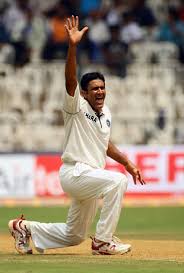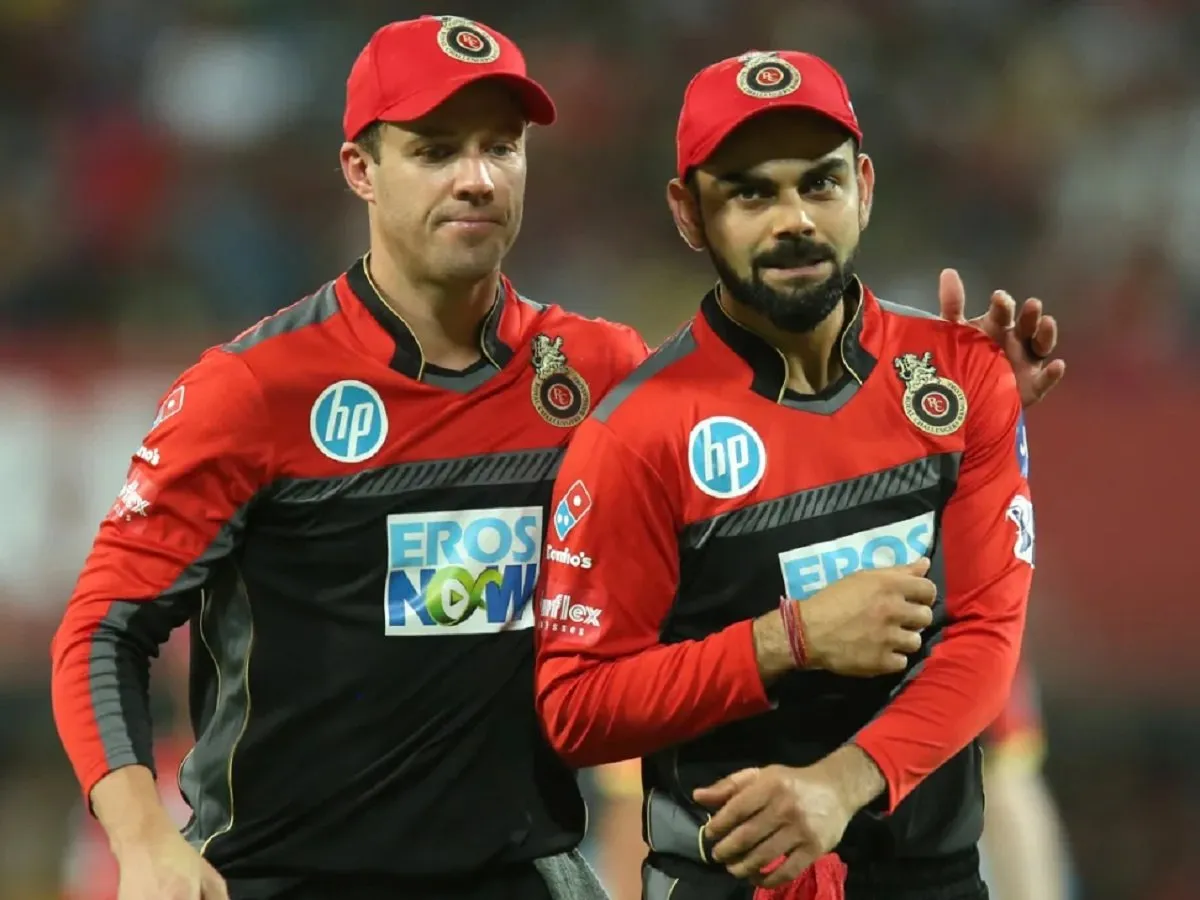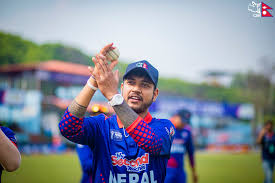Most Economical Bowler In ODI
In the dynamic and fiercely competitive arena of One Day International (ODI) cricket, where every run counts, the role of bowlers is paramount. Among the various accolades that bowlers strive for, one of the most coveted is that of being the most economical. An economical bowler not only restrains the flow of runs but also exerts pressure on the batsmen, thereby playing a crucial role in shaping the course of the game. Let’s delve into the world of ODI cricket and explore some of the most economical bowlers who have left an indelible mark on the sport.
1. Joel Garner (West Indies)

Fondly known as “Big Bird,” Joel Garner was a towering presence on the cricket field. His height, coupled with pinpoint accuracy and deceptive pace, made him a nightmare for batsmen. Garner’s economy rate of 3.09 runs per over in ODIs speaks volumes about his ability to maintain pressure on the opposition throughout his career. His intimidating presence and consistent line and length made him one of the most economical bowlers of his era.
Biography
Joel Garner, affectionately known as “Big Bird,” remains an iconic figure in the annals of cricket history. Standing at an imposing height of 6 feet 8 inches, Garner’s presence on the field was as intimidating as it was awe-inspiring. Renowned for his lethal pace, unplayable bounce, and remarkable accuracy, Garner etched his name in the pantheon of cricketing legends through his stellar performances for the West Indies cricket team during the 1970s and 1980s.
Early Life and Cricketing Journey
Born on December 16, 1952, in Christ Church, Barbados, Joel Garner was destined to leave an indelible mark on the cricketing world. His journey in cricket began at a young age, honing his skills in the local leagues before catching the eye of selectors with his raw talent and imposing stature. Garner made his debut for Barbados in 1975 and soon earned his call-up to the West Indies national team, marking the beginning of a glittering international career.
Rise to Prominence
Garner’s rise to prominence coincided with the golden era of West Indies cricket, where the team dominated world cricket with their fearsome pace battery famously dubbed the “Four Horsemen of the Apocalypse.” Alongside fellow pace bowlers like Michael Holding, Andy Roberts, and Colin Croft, Garner formed a formidable quartet that struck fear into the hearts of opposition batsmen. His ability to extract steep bounce from any pitch, coupled with his pinpoint accuracy, made him a nightmare for even the most accomplished batsmen of his time.
Milestones and Achievements
Throughout his illustrious career, Garner amassed numerous accolades and milestones that solidified his status as one of the greatest fast bowlers of all time. He played a pivotal role in West Indies’ triumphs in the inaugural Cricket World Cup in 1975 and again in 1979, where his devastating bowling performances left an indelible mark on the tournament. Garner’s remarkable economy rate of just over three runs per over in One Day Internationals (ODIs) underscores his ability to control the flow of runs while consistently picking up wickets.
2. Glenn McGrath (Australia)

Renowned for his metronomic accuracy and unerring consistency, Glenn McGrath terrorized batsmen with his nagging line and length. McGrath’s economy rate of 3.88 runs per over in ODIs underscores his ability to stifle run-scoring opportunities while relentlessly probing for wickets. His relentless accuracy and ability to exploit even the slightest hint of weakness in the batsman’s technique made him a true master of the economical bowling art.
Biography
Joel Garner, affectionately known as “Big Bird,” was a colossus of West Indies cricket during the 1970s and 1980s. Standing at an imposing height of 6 feet 8 inches, Garner’s mere presence on the field was enough to intimidate opposition batsmen. Born on December 16, 1952, in Christ Church, Barbados, Garner made his debut for the West Indies in 1977 and quickly established himself as one of the most fearsome fast bowlers of his era.
Glenn McGrath: The Metronome of Australian Cricket
Glenn McGrath, widely regarded as one of the greatest fast bowlers in cricket history, epitomized the virtues of consistency, discipline, and relentless perseverance. Born on February 9, 1970, in Dubbo, New South Wales, McGrath made his debut for Australia in 1993 and went on to become one of the most successful bowlers in the history of the sport.
McGrath’s bowling style was characterized by his unerring accuracy, subtle variations, and ability to exploit the weaknesses of opposition batsmen. Armed with a smooth run-up and a repeatable action, McGrath possessed the rare ability to hit the perfect length consistently, making him a nightmare for batsmen to face.
3. Shaun Pollock (South Africa)

Shaun Pollock epitomized the virtues of discipline and control in bowling. With a smooth run-up and an action that exuded elegance, Pollock possessed the knack of hitting the right areas consistently. His economy rate of 3.67 runs per over in ODIs reflects his ability to maintain pressure on batsmen by bowling tight lines and forcing them into errors. Pollock’s ability to swing the ball both ways added another dimension to his already formidable bowling arsenal.
Biography
Joel Garner, affectionately known as “Big Bird,” was born on December 16, 1952, in Christ Church, Barbados. Standing tall at 6 feet 8 inches, Garner’s towering presence on the cricket field was as imposing as his bowling prowess. With his effortless run-up, classical bowling action, and ability to generate steep bounce from any surface, Garner struck fear into the hearts of batsmen around the world.
Garner made his international debut for the West Indies in 1977 and quickly established himself as one of the most formidable fast bowlers of his era. His partnership with legendary pacemen like Michael Holding and Andy Roberts formed the backbone of the fearsome West Indian bowling attack during the late 1970s and 1980s. Garner’s remarkable economy rate of 3.09 runs per over in One Day Internationals (ODIs) attests to his ability to strangle opposition batsmen with his accuracy and relentless line and length.
Shaun Pollock: The Maestro of Seam Bowling
Shaun Maclean Pollock, born on July 16, 1973, in Port Elizabeth, South Africa, inherited the cricketing genes from his illustrious father, Peter Pollock, who was a former South African cricketer. From a young age, Shaun displayed a precocious talent for cricket, honing his skills in the backyard under the watchful guidance of his father.
Shaun Pollock made his international debut for South Africa in 1995 and swiftly established himself as a linchpin of the Proteas’ bowling attack. Renowned for his immaculate line and length, subtle variations, and unflappable temperament, Pollock was a nightmare for batsmen in both Test cricket and ODIs. His ability to move the ball both ways off the seam and extract awkward bounce from any surface made him a formidable proposition for even the most accomplished batsmen.
4. Anil Kumble (India)

Anil Kumble, fondly known as the “Jumbo,” was not only a masterful leg-spinner but also an exceptionally economical bowler in the ODI format. Despite being primarily known for his wicket-taking prowess, Kumble maintained an impressive economy rate of 4.30 runs per over in ODIs. His relentless accuracy, coupled with subtle variations in pace and flight, made him a potent force in restricting the flow of runs during the middle overs.
Biography
Anil Kumble, fondly known as “Jumbo,” is a name synonymous with resilience, determination, and unyielding spirit in the realm of cricket. Born on October 17, 1970, in Bengaluru, India, Kumble’s journey from a budding cricketer to one of the most revered spin bowlers in the world is nothing short of inspirational.
Early Life and Education
Growing up in Bengaluru, Kumble displayed an early affinity for cricket. His father, who ran a tire business, encouraged his son’s passion for the sport. Despite facing the typical challenges of balancing academics with cricket, Kumble excelled in both domains. He pursued his education at the prestigious National Institute of Engineering in Bengaluru, where he honed his cricketing skills while simultaneously focusing on his studies.
Rise to Prominence
Kumble’s talent as a cricketer was evident from a young age, and it wasn’t long before he made his mark on the domestic circuit. His impressive performances for Karnataka in the Ranji Trophy caught the attention of selectors, and he earned his debut for the Indian national team in 1990 against England. From there, there was no looking back for the leg-spinner.
Signature Moments
Throughout his illustrious career, Kumble etched his name in the annals of cricketing history with several remarkable achievements. One of his most memorable performances came in 1999 when he became only the second bowler in cricket history to claim all ten wickets in a Test innings. His feat against Pakistan in Delhi remains etched in the memories of cricket aficionados worldwide.
Leadership and Legacy
Apart from his exploits on the field, Kumble also showcased exemplary leadership qualities. He served as the captain of the Indian cricket team and led by example, earning the respect and admiration of his teammates. Kumble’s tenure as captain was marked by his astute tactical acumen and unwavering commitment to the team’s success.
Off the field, Kumble’s contributions to the sport extended beyond his playing days. He played a pivotal role in shaping the future of Indian cricket as a coach and mentor. His tenure as the head coach of the Indian national team was characterized by a focus on discipline, professionalism, and a relentless pursuit of excellence.
5. Rashid Khan (Afghanistan)

A relatively new entrant to the international cricket arena, Rashid Khan has already made a significant impact with his leg-spin bowling. Despite his young age, Rashid has showcased remarkable maturity and composure on the field. With an economy rate of 3.90 runs per over in ODIs, Rashid has emerged as one of the most economical bowlers in contemporary cricket. His ability to bowl tight lines, coupled with a plethora of variations, makes him a potent weapon in stifling opposition batsmen.
Biography
Born on September 20, 1998, in Nangarhar, Afghanistan, Rashid Khan Arman showed early signs of cricketing talent. Growing up amidst the backdrop of conflict, Rashid’s passion for cricket blossomed against all odds. Despite the lack of resources and infrastructure, he honed his skills playing tape-ball cricket on the streets of Jalalabad.
Rapid Rise to Prominence
Rashid Khan’s meteoric rise in international cricket was characterized by his exceptional talent and unwavering determination. He quickly established himself as a vital cog in Afghanistan’s bowling arsenal across all formats. His ability to bowl with guile and precision, coupled with a wide array of variations, made him a nightmare for batsmen around the world.
Dominance in T20 Leagues
Rashid’s prowess in the shortest format of the game soon attracted attention from franchise cricket leagues worldwide. He became a sought-after commodity in T20 leagues such as the Indian Premier League (IPL), Big Bash League (BBL), and the Caribbean Premier League (CPL). His stellar performances for teams like Sunrisers Hyderabad in the IPL further cemented his reputation as a match-winner.
Bowling Style and Technique
Rashid Khan is primarily known for his leg-spin bowling, characterized by his quick arm action and subtle variations in pace and flight. His repertoire includes the conventional leg-break, googly, and the well-disguised flipper. What sets him apart is his ability to bowl accurately under pressure, often outfoxing batsmen with his deceptive deliveries.
Achievements and Records
Rashid Khan’s list of achievements is as impressive as it is extensive. He became the youngest player to top the ICC Player Rankings for bowlers in both ODIs and T20Is. Additionally, he holds the record for being the fastest to reach 100 wickets in T20Is, achieving this milestone in just 44 matches.
Off the Field
Beyond his exploits on the cricket field, Rashid Khan is known for his humility and philanthropic efforts. He actively contributes to various charitable causes aimed at uplifting the underprivileged in Afghanistan. His dedication to giving back to his community has earned him admiration both on and off the field.
Conclusion
the art of economical bowling in ODI cricket requires a unique blend of skill, precision, and temperament. The aforementioned bowlers have mastered this art through years of toil and dedication, leaving an indelible mark on the sport with their remarkable performances. Whether it’s the towering presence of Joel Garner, the metronomic accuracy of Glenn McGrath, or the subtle variations of Anil Kumble, these bowlers have set the benchmark for excellence in the realm of economy bowling in ODI cricket. As the sport continues to evolve, aspiring bowlers look up to these legends for inspiration, hoping to emulate their success and carve their own niche in cricketing history.




